Therapeutic Efficacy of Tuina in Treating 48 Cases with Knee Osteoarthritis
Yang Jian-min1, Zhang Kai-yong, Zhang Bi-meng
1 Sports Hospital Affiliated to Zhejiang College of Sports, Hangzhou 310004, China
2 Department of Acupuncture and Moxibustion, Shanghai First People’s Hospital, Shanghai Jiaotong University School of Medicine, Shanghai 200080, China
TUINA TECHNIQUE AND EXERCISE
Therapeutic Efficacy of Tuina in Treating 48 Cases with Knee Osteoarthritis
Yang Jian-min1, Zhang Kai-yong2, Zhang Bi-meng2
1 Sports Hospital Affiliated to Zhejiang College of Sports, Hangzhou 310004, China
2 Department of Acupuncture and Moxibustion, Shanghai First People’s Hospital, Shanghai Jiaotong University School of Medicine, Shanghai 200080, China
Author: Yang Jian-min, attending physician
Objective: To observe the clinical efficacy of tuina in treating knee osteoarthritis (KOA).
Methods: Forty-eight cases with KOA who met the inclusion criteria were enrolled and received tuina therapy. Visual analogue scale (VAS) was used to evaluate pain degree. VAS, range of motion (ROM) and Lysholm score were observed before and after intervention to evaluate the clinical efficacy.
Results: After treatment, VAS score, ROM and Lysholm score were significantly improved, and the total effective rate was 87.5%.
Conclusion: The therapeutic efficacy of tuina in treating KOA was reliable.
Tuina; Massage; Osteoarthritis, Knee
Knee osteoarthritis (KOA), also known as degenerative arthritis, is a chronic bone and joint disease characterized by degenerative lesion of the cartilage in the knee and secondary hyperosteogeny. Patients mainly present with morning stiffness, joint pain and swelling, bony crepitus and dysfunction. It is commonly prevalent in middle-aged and elderly population, especially women. It belongs to the category of ‘bone Bi-impediment’ and ‘Bi-impediment syndrome’ in traditional Chinese medicine (TCM)[1]. Material shows that the prevalence of KOA is 9.56% in China; symptoms usually appear after 40 years old; the incidence of women is higher than that of men, and the prevalence rate of population over 60 years old is 78.5%[2]. The pain and dysfunction caused by the disease can seriously affect patients’ health and quality of life. We used tuina therapy to treat KOA patients, and the conclusion is summarized below.
1 Clinical Materials
1.1 Diagnostic criteria
Diagnostic criteria were proposed based on theGuidelines for the Diagnosis and Treatment of Osteoarthritis(2007 version) formulated by Chinese Medical Association[3]. There has been repeated pain in the knee joint for nearly a month before patients visit the clinic; knee joint X-rays indicate that joint space narrows, joint edges and intercondylar eminence become uplift and dull; cartilaginous isthmus shows osteosclerosis and cystic change; at least 2 times extraction of viscous synovial fluid shows brighter, and white blood count (WBC) <2 000/mL; age ≥40 years;morning stiffness duration ≤3 min; bone rubbing sound during movement. Patient who meets the first 2 items or all of the above diagnostic criteria can be diagnosed as KOA.
1.2 Inclusion criteria
In conformity with the diagnostic criteria; aged between 40 and 70 years old; agreement with no other treatments in the course of treatment, and ensuring more than 90% attendance; good compliance; having signed informed consent forms.
1.3 Exclusion criteria
Those complicated with severe heart, brain and lung diseases or hypertension, diabetes, mental disease and other diseases; those complicated with other knee joint pain diseases such as rheumatism, rheumatoid, and gout; those with serious knee injury and surgery or serious knee joint deformity; those with articular loose body or meniscus injury leading to locked joint.
1.4 Statistical methods
The SPSS 18.0 statistical software was used for analysis, and measurement data were expressed as mean ± standard deviation, and the data of the same group before and after the study were statistically analyzed by paired samplest-test.
1.5 Clinical data
Forty-eight outpatients in our hospital who met the inclusion criteria were enrolled from December 2012 to May 2013, including 20 males and 28 females, and their ages ranged from 40 to 65 years old with an average of 56.8 years; their durations ranged from 4 weeks to 3 years with an average of 1.5 years. Their attendance rate during the treatment was higher than 90%, thus they had good compliance.
2 Treatment Methods
2.1 Tuina
2.1.1 Relaxing the soft tissue around the knee joint
Ask the patient to take a supine position. The doctor firstly used Gun-rolling, Na-grasping with five fingers and Rou-kneading for soft tissue around knee joint especially for quadriceps, then Tanbo-plucked the collateral ligaments and tendons around the knee (Figure 1).
Then ask the patient to take a prone position. The doctor used Gun-rolling, Na-grasping with five fingers and Rou-kneading on the posterior muscle tissues of the thigh and leg. Manipulations lasted for 5 min in order to relax the soft tissue around the knee.
2.1.2 Digital An-pressing the acupoints around the knee joint
Ask the patient to take a supine position. The doctor digital An-pressed the acupoints around the affected knee joint such as Liangqiu (ST 34), Xuehai (SP 10), Neixiyan (EX-LE 4), Dubi (ST 35), Heding (EX-LE 2), Yanglingquan (GB 34), (Figure 2).
Then ask the patient to take a prone position. The doctor digital An-pressed Weizhong (BL 40), Weiyang (BL 39), Chengshan (BL 57) and other acupoints on the affected side, 0.5 min for each point.
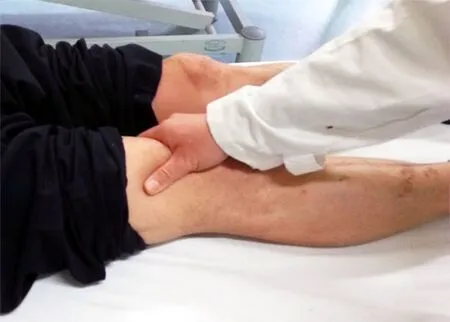
Figure 1. Relaxing the soft tissue around the knee joint
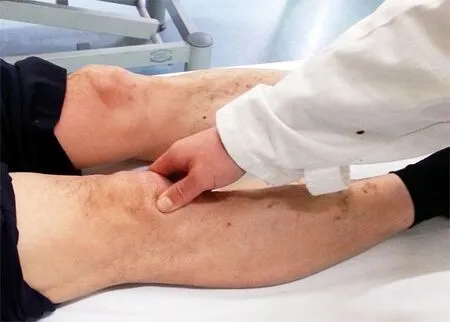
Figure 2. Digital An-pressing
2.1.3 Tui-pushing and Mo-rubbing, An-pressing and Mo-rubbing the patella
Ask the patient to take a supine position. The doctor Tui-pushed and Mo-rubbed the patella to the limit position with the right hand in order to expose the cartilage under it, then digital An-pressed the pain point in the cartilage with the left hand. Then, gently An-pressed the patellar down with the right palm for 10 times, and then Rou-kneaded gently repeatedly to make the patellar on the surface of facies patellaris of femur, and the key point is to massage on the pain points (Figure 3).
2.1.4 Bending knees, Bashen-pulling and rotating
Ask the patient to take a prone position, and to bend the knee. The doctor held the patient’s ankle with one hand and fixed the knee with the other hand, then pulled down gently and rotated the knee in counterclockwise direction, finally, made the leg straight, Bashen-pulled the affected knee, and gently shaked the knee for 5 min (Figure 4).
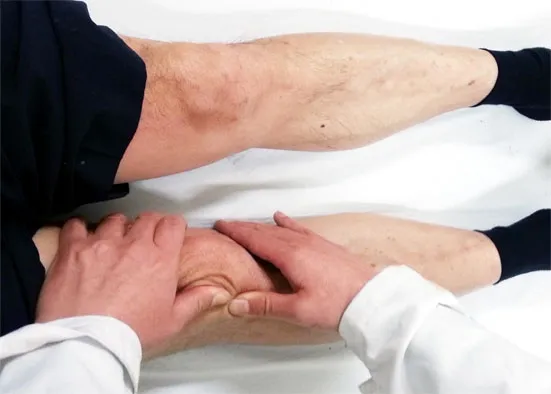
Figure 3. Tui-pushing and Mo-rubbing, An-pressing and Mo-rubbing the patella
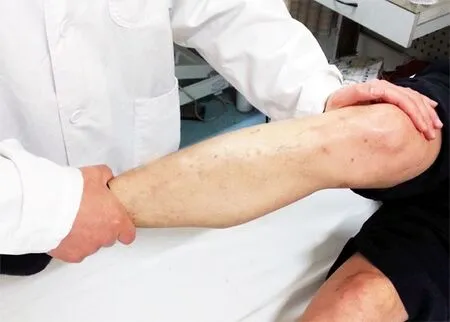
Figure 4. Bending knees, Bashen-pulling and rotating
2.2 Physical therapy
After tuina therapy, infrared light was used to irradiate the knee areas for 20 min.
2.3 Notes and treatment duration
When the patient with KOA was complicated with joint effusion, which meant that the floating patella test was positive, the doctor needed to draw out joint effusion, compress the knee, and then gave manipulation after effusion elimination. The treatment above-mentioned was conducted three times per week, 10 times constituted a course of treatment and there were four courses in total.
3 Observation on Therapeutic Efficacy
3.1 Observation indexes
3.1.1 Knee joint pain degree
Pain degree score was calculated by visual analogue scale (VAS). VAS was self-assessed by the patient before and after the treatment and three times values were averaged for each assessment.
3.1.2 Range of motion (ROM)
ROM of the knee joint was measured before and after treatment, and three times values were averaged for each time point.
3.1.3 Lysholm knee joint score
There were 8 items including supporting, weakness in the knee, lameness, swelling, locked knee, pain, squat and walking up and down the stairs. And the full score was 100, the higher the score, the more normal the joint function.
3.2 Therapeutic efficacy criteria[4]
Recovery: Knee joint pain and swelling disappear, activity function return to normal, and the laboratory examinations show normal.
Improvement: Knee joint pain and swelling relieve, and activity function improves.
Invalid: There is no change in knee joint pain and swelling.
3.3 Results
ROM, VAS and Lysholm scores after treatment were significantly different from those before treatment (Table 1), suggesting that patients’ knee joint pain and dysfunction had relieved after treatment. In forty-eight patients had been enrolled, 10 cases were cured, 32 cases were improved, and 6 cases were invalid, and the total effective rate was 87.5%.
Table 1. VAS, ROM and Lysholm comparisons before and after treatment

Table 1. VAS, ROM and Lysholm comparisons before and after treatment
Note: BT=Before treatment; AT=After treatment; compared with before treatment, 1) P<0.05
?
4 Discussion
KOA belongs to the category of ‘Bi-impediment syndrome’ in TCM, and it is thought in TCM that tendons and bone have close relationship. Han QM, et al[5]considered that knee joint degeneration is caused by function decompensation of the tendons around the knee. Huang GL, et al[6]also believed that osteoarthritis caused by bone joint degeneration is a protective compensatory response and self-adjusting pathophysiological phenomena. The main symptoms of KOA are chronic pain and knee dysfunction, and a consensus on the therapeutic treatment purposes are to alleviate symptoms, delay the joint structural changes, maintain joint function and improve quality of life.
In recent years, there have been a lot of clinical studies about KOA, involving rest, medication, physical therapy, psychological therapy, physical therapy, surgery and so on. These treatments offermany options for the KOA patients. Tuina therapy is easy to be accepted by patients with KOA because it has neither side effects nor surgical invasion[7-9].Zhu XQ[10]used tuina therapy to increase knee blood circulation and activity. Huang WS[11]applied warm needling moxibustion combined with tuina to treat patients with osteoarthritis and it showed more significantly effect than knee injection of Sodium Hyaluronate. For patients with osteoarthritis who is suffering from knee joint adhesion and stiffness, tuina therapy can help release adhesions and lubricate joints; while for who is suffering from knee soft tissue degeneration, tuina can promote blood circulation and promote metabolism, so that the degenerative tissue can be gradually improved and recovered[12]. The study of Yuan WS, et al[13]showed that TCM and Western medicine respectively have their own advantages for this disease in short-term treatments. However, the stability of long-term efficacy of the treatment was the same.
In this study, we stimulated the points, meridians, muscles, nerves and vessels around the affected knee joint by a series of manipulation methods such as An-pressing, Mo-rubbing, Gun-rolling, and Bashen-pulling to promote blood circulation of knee joint and relieve clinical symptoms, and the total effective rate was 87.5%, indicating that this therapy protocol for KOA patients is effective and reliable with simple clinical operation. Therefore, it will be easily accepted by the patient and worthy to be recommended for clinical use.
Conflict of Interest
The authors declared that there was no conflict of interest in this article.
Acknowledgments
This work was supported by Traditional Chinese Medicine Research Foundation Project of Shanghai Health Bureau (No. 2010J007A); Famous Traditional Chinese Medicine Doctor Construction Project of Yan Jun-bai’s Academic Experience Work Room (No. ZYSNXD-CC-MZY023); Shanghai Training and Construction Project of the Shortage Personnel of Traditional Chinese Medicine.
Statement of Informed Consent
Informed consent was obtained from all individual participants included in this study.
[1] Wang T. Therapeutic efficacy observation on tuina alternatively treating 98 cases with degenerative gonarthritis. Linchuang Heli Yongyao, 2011, 4(7A): 131-132.
[2] Chen HZ, Li ZM. Internal Medicine. 4th Edition. Beijing: People’s Medical Publishing House, 1993: 833.
[3] Chinese Orthopaedic Association. Guidelines for the diagnosis and treatment of osteoarthritis (2007 version). Zhongguo Linchuang Yisheng Zazhi, 2008, 36(1): 28-30.
[4] State Administration of Traditional Chinese Medicine. Criteria of Diagnosis and Therapeutic Effects of Diseases and Syndromes in Traditional Chinese Medicine. Nanjing: Nanjing University Press, 1994: 48.
[5] Han QM, Wang YH, Huang XD, Yi ZY. Exploration and discussion of the idea of treating knee osteoarthritis based on tendons. Xin Zhongyi, 2009, 41(1): 5-6.
[6] Huang GL, Sun CJ, Li ZH, Zhan RS. Correctly understanding and treating ‘osteoarthritis’ problem. Zhongguo Xiandai Shiyong Yixue Zazhi, 2004, 3(3): 43-44.
[7] Sun K, Bao XM, Zhou ZL, Song YC, Liu DC. Observations on the efficacy of acupuncture plus manipulation in treating knee osteoarthritis. Shanghai Zhenjiu Zazhi, 2010, 29(3): 181-183.
[8] Liu HB. Therapeutic effect observation on combined tuina and Chinese medicinal fumigation for knee osteoarthritis. J Acupunct Tuina Sci, 2011, 9(3): 173-176.
[9] Fan YZ, Gong L, Yan JT, Fang M, Wu YC. Observations on the efficacy of acupuncture and masotherapy plus rehabilitation training in treating knee osteoarthritis. Shanghai Zhenjiu Zazhi, 2011, 30(1): 30-32.
[10] Zhu XQ. Clinical analysis of tuina in treating 82 cases with knee osteoarthritis. Zhejiang Zhongyiyao Daxue Xuebao, 2011, 35(2): 259-260.
[11] Huang WS. Clinical observation on treatment of degenerative knee osteoarthritis with warming needle plus tuina. J Acupunct Tuina Sci, 2009, 7(2): 98-101.
[12] Yu DF. Science of Tuina. Shanghai: Shanghai Science and Technology Press, 2003: 6-7.
[13] Yuan WS, Liu ZL, Qiao SX, Xia L, Dou XL, Guan S.Clinical control observation on traditional Chinese medicine and Western medicine in treating knee osteoarthritis. Zhongguo Laonianxue Zazhi, 2011, 30(20): 3931-3933.
Translator: Deng Ying
Zhang Bi-meng, M.D., associate chief physician, associate professor.
E-mail: pjzhtiger08@aliyun.com
R244.1
: B
Date:February 20, 2014
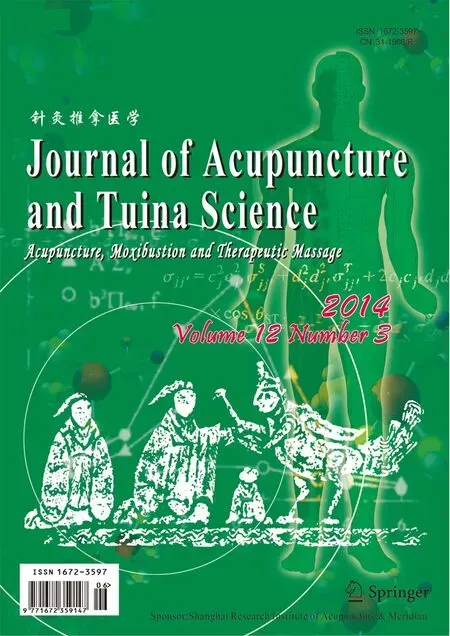 Journal of Acupuncture and Tuina Science2014年3期
Journal of Acupuncture and Tuina Science2014年3期
- Journal of Acupuncture and Tuina Science的其它文章
- Therapeutic Efficacy Observation on Combined Taijiquan and Auricular Point Sticking for Perimenopausal Insomnia
- Clinical Study on Fu’s Subcutaneous Needling with Laser for Postherpetic Neuralgia
- Clinical Study on Point Application Using Chinese Herbal Medicine for Pediatric Chronic Cough
- Therapeutic Effect Observation on Combining Electroacupuncture and Tuina for Migraine
- Blood Perfusion Effect of Acupuncture on Acute Facial Paralysis Observed by Laser Speckle Technique
- Observation on Clinical Effects of Tuina plus Hot Compress for Infantile Diarrhea Due to Spleen-kidney Yang Deficiency
